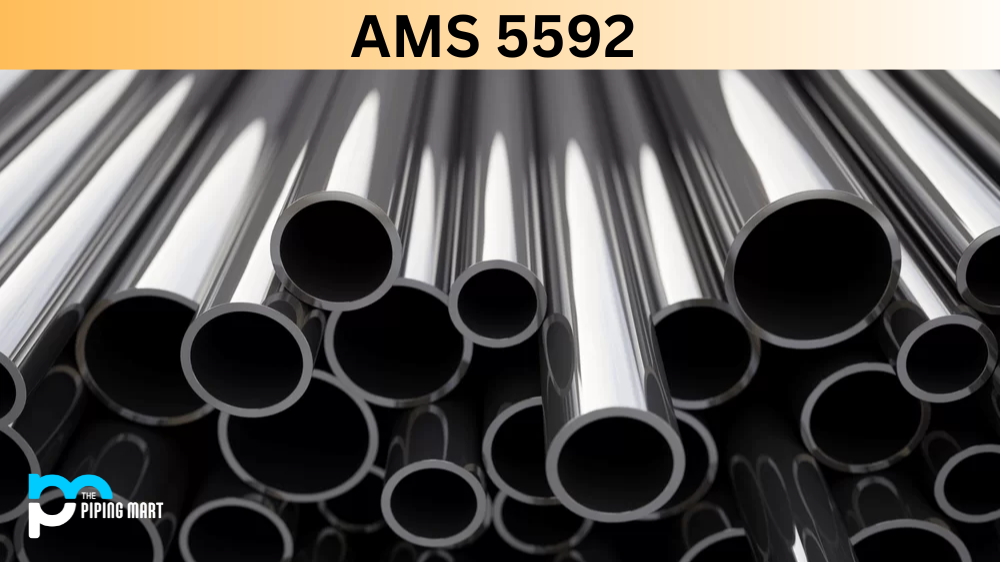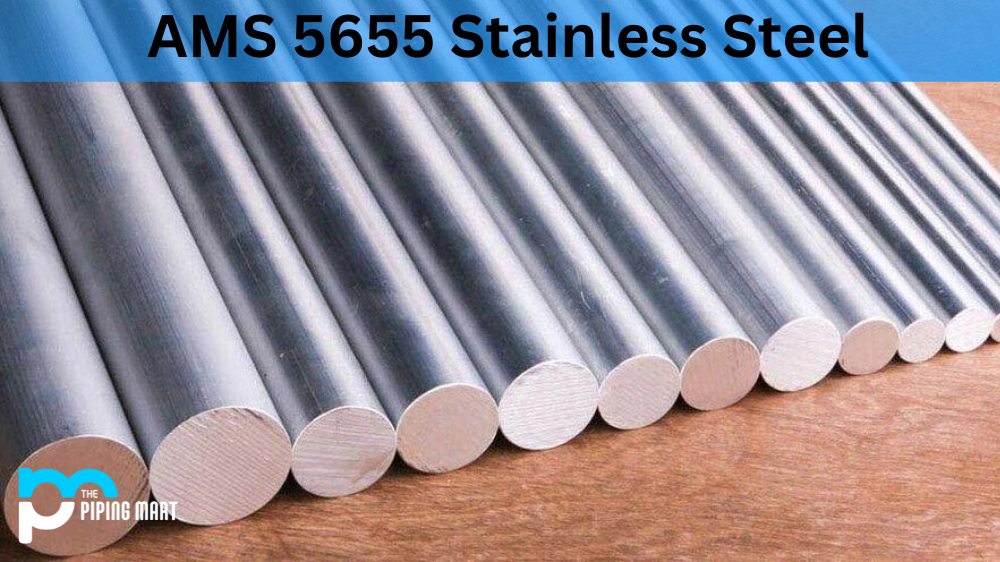If you’re involved in the manufacturing or aerospace industries, you will likely come across AMS 5592. This material is widely used in aerospace due to its high strength-to-weight ratio and excellent corrosion resistance. But what exactly is AMS 5592, and what makes it so special? In this blog, we’ll dive deeper into everything you need to know about AMS 5592, including its composition, physical and mechanical properties, uses, hardness, and heat treatment.
What is AMS 5592?
AMS 5592 (also known as 330 Stainless Steel) refers to a particular specification used to determine the requirements and characteristics of a specific type of material. This material, 330 stainless steel, is used in various industries, including aerospace and chemical processing. But what makes AMS5592 so special? It outlines this steel’s exact chemical composition, mechanical properties, and other important factors. This ensures that any products made with this material are of the highest quality and meet strict industry standards. Whether you’re an engineer, manufacturer, or simply curious about materials science, AMS5592 is a fascinating topic worth exploring.
What Form is AMS 5592 Available at Piping Mart?
- Nut
- Bar
- Bolt
- Pipe
- Screw
- Tubing
- Valves
- Washers
- ERW Pipes
- Fasteners
AMS 5592 Composition
AMS 5592 material is a nickel-based alloy that contains a high percentage of nickel (up to 70%), along with smaller amounts of chromium, iron, cobalt, tungsten, and molybdenum. Adding these elements enhances the alloy’s strength, flexibility, and corrosion resistance, making it suitable for harsh environments.
| Element | Content (%) |
|---|---|
| Iron, Fe | 42 |
| Nickel, Ni | 36 |
| Chromium, Cr | 19 |
| Manganese, Mn | 2 |
| Silicon, Si | 1.13 |
| Carbon, C | 0.080 |
| Phosphorous, P | 0.040 |
| Sulfur, S | 0.030 |
AMS 5592 Physical Properties
AMS 5592 has a density of 8.2 g/cm³, which is relatively low compared to other metals like steel. It also has a high melting point of 1390°C, which makes it ideal for high-temperature applications. The alloy has a coefficient of thermal expansion of 12.9 µm/m°C, which means it expands slightly with increasing temperature. AMS 5592 sheet has excellent thermal and electrical conductivity properties, making it the preferred choice for electronic components.
| Properties | Metric | Imperial |
|---|---|---|
| Density | 8 g/cm3 | 0.289 lb/in³ |
AMS 5592 Mechanical Properties
AMS 5592 has excellent mechanical properties, including high tensile strength, hardness, and flexibility. Its ultimate tensile strength is around 1750 MPa, and its yield strength is around 1300 MPa. It also has a high elongation at break (15%), indicating its ductile behaviour. Unlike nickel-based alloys that become brittle at low temperatures, AMS 5592 retains its mechanical properties at cryogenic temperatures.
| Properties | Metric | Imperial |
|---|---|---|
| Tensile strength, ultimate | 550 MPa | 79800 psi |
| Tensile strength, yield (@0.2%) | 260 MPa | 37700 psi |
| Modulus of elasticity | 197 GPa | 28600 ksi |
| Poisson’s ratio | 0.27 – 0.30 | 0.27 – 0.30 |
| Elongation at break (in 50 mm) | 40% | 40% |
AMS 5592 Thermal Properties
| Properties | Metric | Imperial |
|---|---|---|
| Thermal expansion co-efficient | 14.4 µm/m°C | 8 µin/in°F |
| Thermal conductivity | 12.5 W/mK | 86.8 BTU in/hr.ft².°F |
AMS 5592 Equivalent
Other designations that are equivalent to AMS 5592 include the following.
- 330 stainless steel
- AMS 5716
- ASTM B366
- ASTM B511
- ASTM B512
- ASTM B535
- ASTM B536
- ASTM B546
- ASTM B710
- ASTM B739
- DIN 1.4333
- DIN 1.4864
- SAE 30330
- SAE J405 (30330)
- SAE J412 (30330)
AMS 5592 Uses
Due to its excellent mechanical and physical properties, AMS 5592 plates is used in various aerospace and industrial applications. For example, it is often used in aircraft engine components, such as gas turbine compressor blades and seals. Due to its excellent corrosion resistance, it is also used in oil and gas applications, such as downhole tooling and pipes.
AMS 5592 Hardness
AMS 5592 has a high hardness, making it ideal for high-stress applications. Its Rockwell hardness is around 45, much higher than steel’s typical hardness. This high hardness also makes AMS 5592 resistant to wear and abrasion.
AMS 5592 Heat Treatment
AMS 5592 can be heat-treated to enhance its mechanical properties. For example, it can be solution annealed at 1149°C followed by oil quenching to improve its ductility and toughness. It can also be age-hardened by heating at 760°C for 16 hours and then air cooling to increase its hardness and strength.
Conclusion:
AMS 5592 material is an important material widely used in the aerospace and industrial industries due to its excellent mechanical and physical properties. Its high strength-to-weight ratio, corrosion resistance, and low density make it ideal for high-stress and harsh environments. By understanding its composition, physical and mechanical properties, uses, hardness, and heat treatment, you can make informed decisions about using AMS 5592 in your applications.

Meet Bhavesh, a seasoned blogger with a wealth of knowledge and experience. From metal products manufacturing to retail, Bhavesh has a diverse background in various industries and is dedicated to sharing his insights and expertise with readers.




